
The PRINCE Model
A new framework for monitoring the environmental impacts linked to Swedish consumption – both inside and chain to 59 product groups or sectors. They reflect the Eurostat NACE Rev. 2 classification given to the business providing a service directly to the final consumer; or, in the case of goods, the last business in the supply chain before the goods reach the final consumer.
The PRINCE research project developed ways to quantify the different pressures that Swedish consumption puts on the natural world, both at home and around the globe.
Method
First developed in 2018 the PRINCE model is an easily updated monitoring framework that enables policymakers to set trackable goals for sustainable consumption in Sweden.
Along the way new indicators for environmental pressures are being investigated – specifically for fish, hazardous chemicals and biodiversity.
The PRINCE indicator results are generated using a tailor-made model that tracks flows of commodities through the global economy, and estimates the environmental pressures resulting from consumption and production in 44 countries and 5 aggregate “rest of” world regions. The model then allocates those pressures to 59 product groups of goods and services consumed in Sweden and to different types of consumption: by the public sector, by private citizens, and in the form of capital investments.
By linking Swedish national input-output tables (which represent monetary flows between industrial sectors) to a well-recognized multiregional input-output (MRIO) model, EXIOBASE the model makes it possible to trace and quantify flows beyond Sweden’s borders and back along its international supply chains.
By using Sweden-specific national input-output tables the PRINCE model ensures the highest levels of statistical correctness for Swedish data, and provides more timely updates to indicator results.
PRINCE Product Groups
To construct consumption-based macro-indicators, PRINCE reallocates emissions and other environmental pressures along the global value chain to 59 product groups or sectors. They reflect the Eurostat NACE Rev. 2 classification given to the business providing a service directly to the final consumer; or, in the case of goods, the last business in the supply chain before the goods reach the final consumer.
The table below shows the English and Swedish names of the product groups used in PRINCE results, the NACE classifications they represent, and some explanations about what they include. As the PRINCE model combines data from EXIOBASE3 and Swedish national accounts, it was necessary to harmonize the lists of product groups used in the two data sets, resulting in the final list of 59.
Learn more about product groups and how to unerstand the results.
| NACE Rev. 2 code(s) | PRINCE short names | PRINCE Swedish names | Explanation |
| A01 | Agricultural products | Jordbruk | Includes products of agriculture and hunting (including some food products) |
| A02 | Forestry products | Skogsbruk | Includes products of forestry, logging and related services |
| A03 | Fish products | Fiske och vattenbruk | Fish and other fishing products; aquaculture products; support services to fishing |
| B | Mining and extraction products | Utvinning av mineraler | Includes products of mining, quarrying and other types of extraction of minerals, including ores, coal, oil and gas; and supporting activities |
| C10–12 | Food, beverages and tobacco | Livsmedel, dryck, tobak | Includes food products, beverages and tobacco products |
| C13–15 | Textiles | Textil kläder läder | Textiles, wearing apparel and leather products |
| C16 | Wood products | Trävaror | Wood and products of wood and cork, except furniture; articles of straw and plaiting materials |
| C17 | Paper | Pappers och pappersvarutillverkning | Paper and paper products |
| C18 | Printing | Grafisk produktion | Printing and recording services |
| C19 | Refined petroleum products | Stenkol och petroleumprodukter | Includes refined petroleum-based oils and coke (NB emissions from burning fossil fuels are allocated to “Household direct” and other product groups, depending on their use) |
| C20–21 | Chemical and pharmaceutical products | Kemiska produkter; Läkemedel | Chemicals and pharmaceutical products (includes fertilizers, paints, cleaning and beauty products etc.) |
| C22 | Rubber and plastic products | Gummi- o plastvaror | Rubber and plastic products |
| C23 | Non-metallic mineral products | Glas porslin cement | Includes glass, cement, ceramics products, bricks, cut stone, flagstones etc. |
| C24 | Steel and metal products | Stål och metallframställning | Includes cast metals, wire, fittings, tubes, pipes |
| C25 | Fabricated metal products | Tillv av metallvaror, försvarsindustri | Includes structural products, tanks and boilers, cutlery, tools, weapons |
| C26 | Electronic products | Datorer; Instrument | Includes computers; telephones, cameras and other consumer electronics; instruments; electronic and optical media |
| C27 | Electrical equipment | Elapparatur | Includes electric motors, cables and wiring; domestic appliances; batteries and lighting equipment |
| C28 | Other machinery and equipment | Tillv av övriga maskiner | Includes office machinery and equipment, ovens and furnaces, construction and mining vehicles and equipment, power tools, other machinery and equipment |
| C29 | Motor vehicles | Motorfordon | Includes motor vehicles, trailers and semi-trailers; electrical and electronic equipment for motor vehicles |
| C30 | Other transport equipment | Tillv av andra transportmedel | Includes boats, aircraft, motorcycles, bicycles, military fighting vehicles, trains |
| C31–32 | Furniture and other manufactured goods | Tillv möbler etc | Includes furniture, toys, sports goods, jewellery, musical instruments, medical and dental equipment |
| C33 | Machinery repair and installation services | Ö tillv ej medicinsk; Medicinsk utrustn; Reparation av maskin | Repair and installation of machinery and equipment |
| D35 | Electricity, gas and heat | el, gas och värme | Includes production and distribution of electricity, gas, steam and air-conditioning |
| E36 | Water supply | Vattenförsörjning | Water collection, treatment and supply services |
| E37–39 | Sewerage and waste management | Avloppsrening, avfall, återvinning | Sewerage; waste collection, treatment and disposal activities; materials recovery; remediation activities and other waste management services |
| F | Construction and civil engineering | Bygg och anläggning | Includes construction of residential and non-residential buildings; infrastructure and utility projects |
| G45–47 | Wholesale and retail | Handel | Wholesale and retail trade, and vehicle repair services (NB does not include emissions linked to the products sold or repaired) |
| H49 | Rail and road transport | Landtransporter; godstrafik, tåg, taxi | Includes passenger and freight transport services by rail and road; transport via pipelines; taxi services |
| H50 | Water transport | Sjötransport | Includes sea, coastal and inland water transport services |
| H51 | Air transport | Lufttransport | Includes passenger and freight air transport services; space transport |
| H52–53 | Warehousing and delivery services | Spedition; Post och bud, lagerhållning | Includes warehousing, storage and cargo handling services; support services for transportation; postal and courier services |
| I | Hospitality and food services | Hotell; Restaurang | Hospitality, tourism, short-term lodging, food and drink services |
| J58 | Publishing | Förlagsverksamhet | Publishing services |
| J59_60 | Media | Media | Includes motion picture, video and television programme production services, sound recording and music publishing; programming and broadcasting services |
| J61 | Telecommunications | Telekommunikation | Telecommunications services |
| J62_63 | IT services | IT-tjänster | Computer programming, consultancy and related services; information services |
| K64 | Financial services | Banker, fonder mm | Includes banking and other financial services, except insurance and pension funds |
| K65 | Insurance and pension services | Försäkring o pension | Includes insurance, reinsurance and pension funding services, except compulsory social security |
| K66 | Services auxiliary to finance | Stödtjänster till finans | Includes services auxiliary to financial services and insurance services |
| L68 | Real estate | Fastighetsverksamhet | Includes buying and selling, renting and operating of own or leased properties; real estate agency and management services |
| M69–70 | Legal, accounting and management services | Juridisk ekonomi tjänster; HK, PR o rådgivning | Includes legal and accounting services; services of head offices; management consultancy services |
| M71–72 | Architecture, engineering, research | Arkitekt tekniska tjänster; FOU | Includes architectural and engineering services, industrial design, geophysical surveying, natural and social science research |
| M73 | Marketing | Reklam, marknadsföreing | Includes advertising, marketing, public relations research services |
| M74–75 | Other professional services | Design, foto, tolk; Veterinär | Includes design, photographic and other services; veterinary services |
| N77 | Rental and leasing | Uthyrning o leasing | Rental and leasing services (excluding real estate) |
| N78 | Employment services | Bemanning mm | Employment services |
| N79 | Travel services | Resetjänster | Includes travel agencies, tour operators and other reservation services and related services |
| N80–82 | Other business services | Bevakning; Fastighetsservice; Kontorstjänster; Samhall | Includes security and investigation services; services to buildings and landscape; office administration, office support and other business support services |
| O84 | Public services and defence | Offentlig förvaltning | Includes public administration and defence services; social security services |
| P85 | Education services | Utbildning | Includes schools, sports and cultural education services |
| Q86 | Health care | Hälso- och sjukvård | Includes hospitals and clinics, dental services |
| Q87–88 | Social work and social care | Vård, omsorg m boende; Öppna sociala insats | Includes residential and non-residential care and social assistance services |
| R90–92 | Cultural and entertainment services | Kultur, bibliotek mm | Includes creative, arts and entertainment services; libraries, archives, museums; gambling and betting services |
| R93 | Sport and recreation services | Sport, fritid, nöje | Sporting services and amusement and recreation services |
| S94 | Membership organizations | Medlemsorganisationer | Includes services furnished by membership organizations, including religious and political organizations, trade unions |
| S95 | Consumer repair services | Rep av konsumentprodukter | Repair services for computers and personal and household goods |
| S96 | Other personal services | Ö konsumenttjänster | Includes miscellaneous services such as laundry, hairdressing and beauty services, health and well-being services, funeral services |
| T–U | Other services | Förvärvsarbete i hushåll, ambassader | Includes households as employers; activities of extraterritorial organizations and embassies |
| Additional category (not in NACE system) | Household direct (emissions) | Direkt miljöpåverkan från hushåll | Includes emissions directly generated by households, or resource use directly by households; e.g. emissions from use of fuels for private cars or domestic heating, or use of treated water |
Identifying and locating environmental pressures tied to Swedish consumption
EXIOBASE already includes many environmental “extensions” – data on the environmental pressures associated with different industries in different countries and regions – which are the foundation for generating consumption-based environmental indicators.
Part of the work under PRINCE has been to investigate which EXIOBASE extensions would be suitable for following up Sweden’s Generational Goal, and to develop new extensions for types of environmental pressure not yet included in EXIOBASE.
As well as allocating consumption-based pressures to product groups and consumption types, the PRINCE model also shows where in the world the environmental pressures due to production occurred: in Sweden or in one of 43 other individual countries or 5 aggregated regions.
The MRIO modelling means that it is possible to estimate where in the world the pressures associated with Swedish consumption occur. For example, emissions due to phosphate mining may occur in one country, further emissions due to fertilizer production from those phosphates in another, and a share of those due to fruit production in yet another country; and all could be attributed to the product group Food products if the fruit was eventually bought in Sweden.
The PRINCE results are presented for 44 individual countries and 5 aggregated regions.
AFRICA
South Africa
Rest of Africa: Algeria, Angola, Benin, Botswana, Burkina Faso, Burundi, Cameroon, Cape Verde, Central African Republic, Chad, Comoros, Democratic Republic of the Congo, Republic of Congo, Cote d’Ivoire, Djibouti, Equatorial Guinea, Eritrea, Ethiopia, Gabon, Gambia, Ghana, Guinea, Guinea-Bissau, Kenya, Lesotho, Liberia, Libya, Madagascar, Malawi, Mali, Mauritania, Mauritius, Mayotte, Morocco, Mozambique, Namibia, Niger, Nigeria, Reunion, Rwanda, Sao Tome and Principe, Senegal, Seychelles, Sierra Leone, Somalia, South Sudan, St. Helena, Sudan, Swaziland, Tanzania, Togo, Tunisia, Uganda, Western Sahara, Zambia, Zanzibar, Zimbabwe
AMERICAS
Brazil, Canada, Mexico, United States
Rest of: Anguilla, Antigua and Barbuda, Argentina, Aruba, Bahamas, Barbados, Belize, Bermuda, Bolivia, Bonaire, St Eustatius and Saba, Cayman Islands, Chile, Colombia, Costa Rica, Cuba, Curaçao, Dominica, Dominican Republic, Ecuador, El Salvador, Falkland Islands (Malvinas), French Guiana, Greenland, Grenada, Guadeloupe, Guatemala, Guyana, Haiti, Honduras, Jamaica, Martinique, Montserrat, Netherlands Antilles, Nicaragua, Panama, Paraguay, Peru, Puerto Rico, Sint Maarten (Dutch part), St Kitts and Nevis, St Lucia, St Pierre and Miquelon, St Vincent and the Grenadines, Suriname, Trinidad and Tobago, Turks and Caicos Islands, Uruguay, Venezuela, British Virgin Islands, Virgin islands (US)
ASIA AND PACIFIC
Australia, China, India, Indonesia, Japan, South Korea, Taiwan
Rest of Asia and Pacific: Afghanistan, American Samoa, Antarctica, Armenia, Azerbaijan, Bangladesh, Bhutan, Bouvet Island, British Antarctic Territories, British Indian Ocean Territory, Brunei Darussalam, Cambodia, Christmas Island, Cocos (Keeling) Islands, Cook Islands, Fiji, French Polynesia, Georgia, Guam, Heard and McDonald Islands, Hong Kong SAR, Kazakhstan, Kiribati, North Korea, Kyrgyz Republic, Lao PDR, Macao SAR, Malaysia, Maldives, Marshall Islands, Federated States of Micronesia, Mongolia, Myanmar, Nauru, Nepal, New Caledonia, New Zealand, Niue, Norfolk Island, Northern Mariana Islands, Pakistan, Palau, Papua New Guinea, Philippines, Pitcairn, Samoa, Singapore, Solomon Islands, South Georgia and South Sandwich Islands, Sri Lanka, Tajikistan, Thailand, Timor-Leste, Tokelau, Tonga, Turkmenistan, Tuvalu, USA minor outlying islands, Uzbekistan, Vanuatu, Vietnam, Wallis and Futuna Islands
EUROPE
Austria, Belgium, Bulgaria, Croatia, Czech Republic, Denmark, Estonia, Finland, France, Germany, Greece, Hungary, Ireland, Italy, Latvia, Lithuania, Luxembourg, Malta, Netherlands, Norway, Poland, Portugal, Romania, Russia, Slovakia, Slovenia, Spain, Sweden, Switzerland, United Kingdom
Rest of Europe: Albania, Andorra, Belarus, Bosnia and Herzegovina, Channel Islands, Faeroe Islands, Gibraltar, Iceland, Isle of Man, Kosovo, Liechtenstein, Macedonia, FYR, Moldova, Monaco, Montenegro, San Marino, Serbia, Svalbard and Jan Mayen Islands, Ukraine, Vatican City
MIDDLE EAST
Cyprus, Turkey
Rest of Middle East: Bahrain, Egypt, Iran, Iraq, Israel, Jordan, Kuwait, Lebanon, Oman, Palestine, Qatar, Saudi Arabia, Syria, United Arab Emirates, Yemen
An easily updated model
Because the national and MRIO data are linked in a relatively simple way, the model can be easily updated when either new national statistics or new EXIOBASE data becomes available. This makes it possible to produce time-series of comparable data to monitor progress towards the Generational Goal.
Time-series data from the PRINCE model on greenhouse gas emissions, air pollutant emissions and material flows for 2008–2014 are now available for download in Microsoft Excel format.
Other countries can adopt the PRINCE method to create a model that helps track environmental policy objectives relating to impacts from national consumption. To learn how get in contact with us!
Time-series data from the PRINCE Model 2008-2014
Publications on environmental footprinting
-
 21 Jan 2019
21 Jan 2019Estimating the environmental pressures of Swedish consumption: the PRINCE model
Environmental pressures from Swedish consumption: A hybrid multi-regional input-output approach Steinbach, N., Palm, V., Cederberg, C., Finnveden, G., Palm, V., Wood, R., Berglund, M., Dawkins,…
-
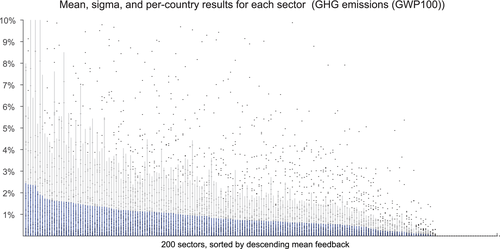 15 Jan 2019
15 Jan 2019Advances in multi-regional input-output modelling in the PRINCE model
A note on the magnitude of the feedback effect in environmentally extended multi-region input-output tables Moran, D., Wood, R. and Rodrigues, J. F. D. (2018). Journal…
-
 11 Jan 2019
11 Jan 2019The footprint of information and communication technology consumption in Sweden and the EU
A multi-impact analysis of changing ICT consumption patterns for Sweden and the EU: Indirect rebound effects and evidence of decoupling Joyce, P. J., Finnveden, G.,…
-
 07 Jan 2019
07 Jan 2019Environmental pressure from Swedish consumption: The largest contributing producer countries, products and services
Environmental pressure from Swedish consumption: The largest contributing producer countries, products and services Fauré, E., Dawkins, E., Wood, R., Finnveden, G., Palm, V., Persson, L….
-
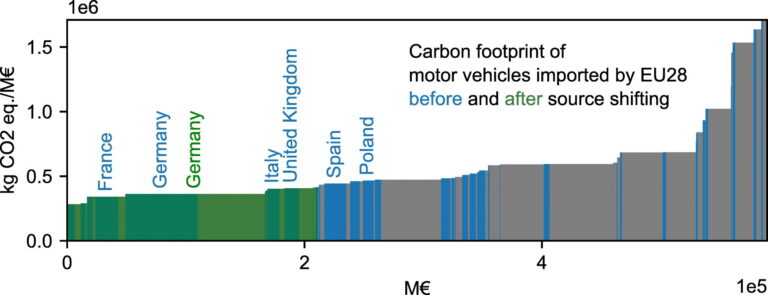 05 Jan 2019
05 Jan 2019Can we reduce the EU’s footprint by changing where we source our goods and services?
Modeling reductions in the environmental footprints embodied in European Union’s imports through source shifting de Boer, Bertram. F., Rodrigues, J. F. D. and Tukker, A….
-
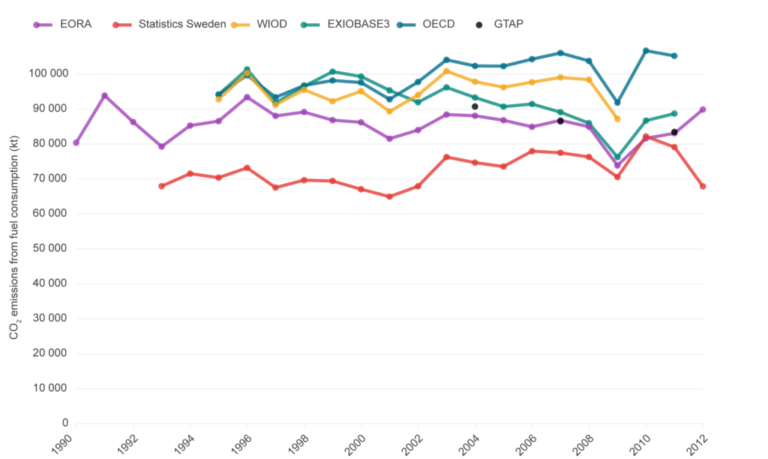 04 Jan 2019
04 Jan 2019Comparing different models for calculating Swedish footprints
The Swedish footprint: A multi-model comparison Dawkins, E., Moran, D., Palm, V., Wood, R. and Björk, I. (2019). Journal of Cleaner Production, vol. 209: 1578–92. DOI: 10.1016/j.jclepro.2018.11.023…
-
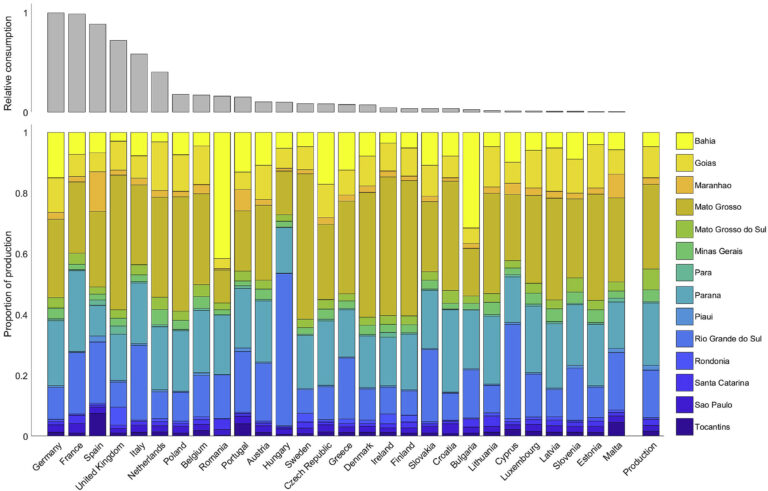 03 Jan 2019
03 Jan 2019Getting into the details – a method for exploring environmental pressures of Swedish consumption in large countries like Brazil
Capturing the heterogeneity of sub-national production in global trade flows Croft, S. A., West, C. D. and Green, J. M. H. (2018). Journal of Cleaner Production, vol. 203: 1106–1118. DOI: 10.1016/j.jclepro.2018.08.267 (open access)…
-
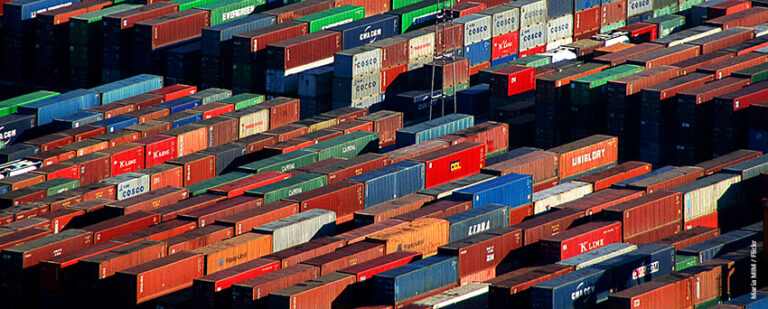 11 Jan 2017
11 Jan 2017Explaining the foundations of PRINCE model
Environmental footprinting with multiregional input-output models Author: Elena Dawkins Overview This new PRINCE brief gives a quick introduction to the approach at the heart of…
-
 23 Aug 2016
23 Aug 2016The PRINCE project brochure
The PRINCE project brochure Download our project brochure to learn more about PRINCE. Overview A short introduction to PRINCE. Download the brochure